Welcome to our comprehensive guide on the top 14 shrubs that thrive in Florida’s diverse climate. From vibrant flowering varieties to lush evergreens, this article will provide invaluable insights for Florida gardeners seeking beautiful and resilient shrubs to enhance their landscapes. Let’s dive into the world of botanical wonders!
Azalea
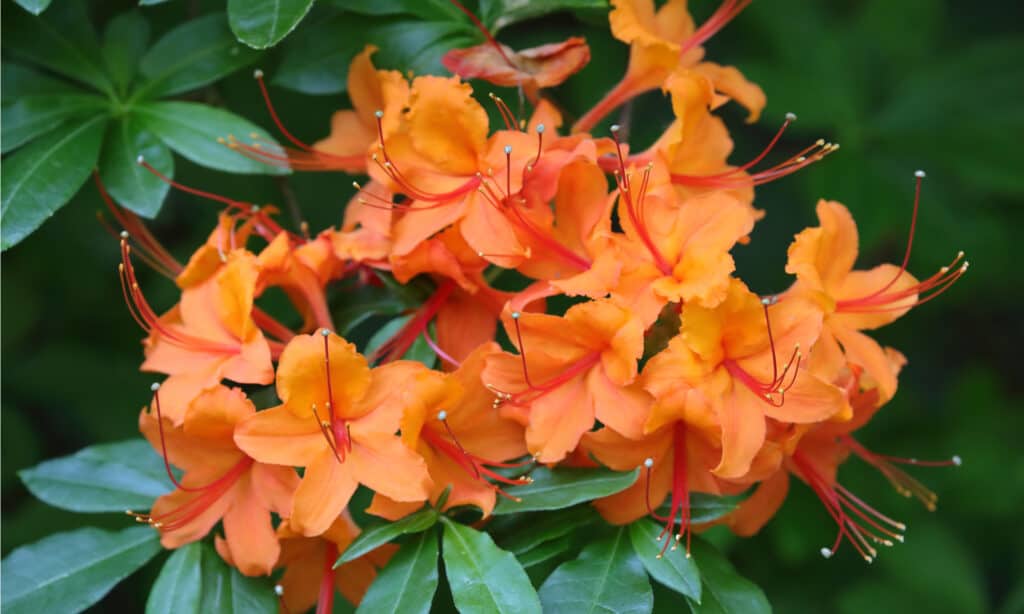
Orange Azalea flowers (Rhododendron calendulaceum) are a wonderful sign of spring.
©Ole Schoener/Shutterstock.com
Azalea is a beautiful flowering shrub that grows in many climates but is especially popular in Florida. Azalea bushes feature a mix of evergreen and deciduous foliage, ranging from deep green to yellow-green in color. White, pink, purple, and red flowers bloom in the spring, with some varieties having blooms that last into the summer.
Azalea bushes prefer slightly acidic soil and partial shade to full sun, making them a great choice for Florida’s humid climate. Though they can grow in full sun, they require extra care to ensure they receive enough water and nutrients to stay healthy. Planting Azalea in Florida is also beneficial because they are relatively low-maintenance and resistant to many common pests. For best results, it’s important to water the soil deeply and provide the necessary fertilization.
Bay Laurel
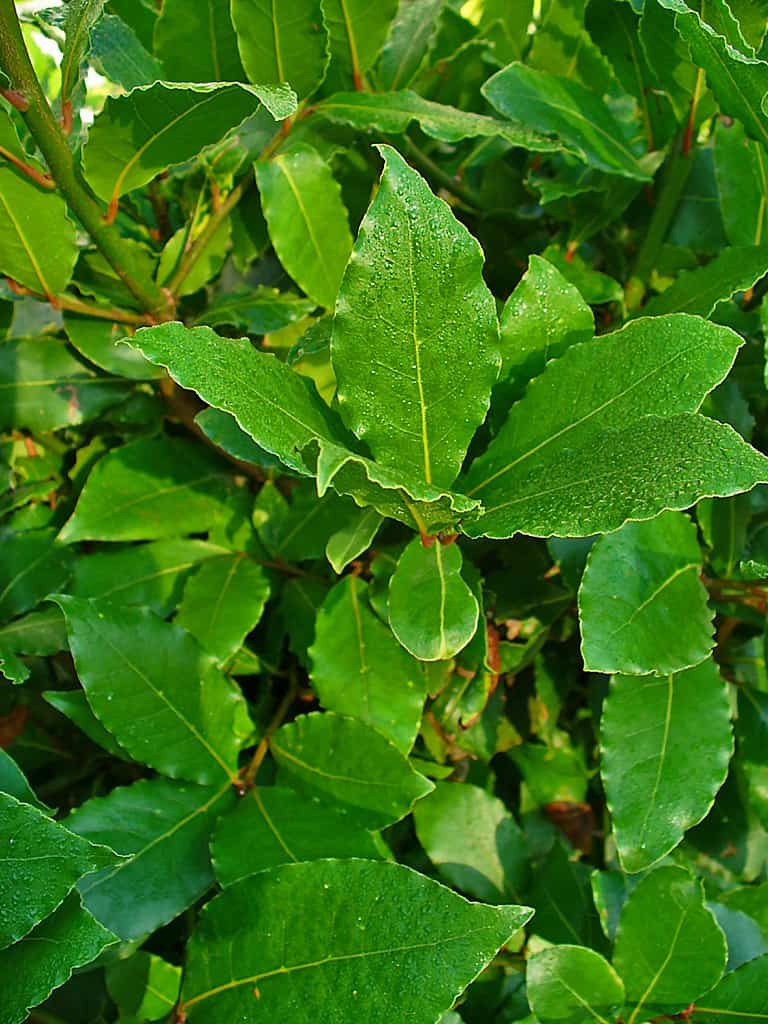
Growing a bay laurel (Taurus nobles) in your yard will give you plenty of edible bay leaves.
©H. Zell / CC BY-SA 3.0 – License
Bay laurel is a Mediterranean evergreen shrub, also known as Laurus nobilis, which is popular in Florida for its ease of cultivation and attractive foliage. It typically grows to a height of 8-10 feet, with a width of 6-8 feet. Its leaves are glossy and dark green, lance-shaped, and grow in an alternate arrangement along the stems. It produces small yellow flowers in the spring, followed by small purple-black berries.
This plant is cold-hardy and can tolerate temperatures as low as 15 degrees F. It prefers full sun to partial shade and grows best in moist, well-draining soils enriched with organic matter. To promote lush foliage, fertilize it twice a year, once in the spring and again in the summer. Prune it regularly to maintain its shape and to keep it from becoming too large.
Bottlebrush
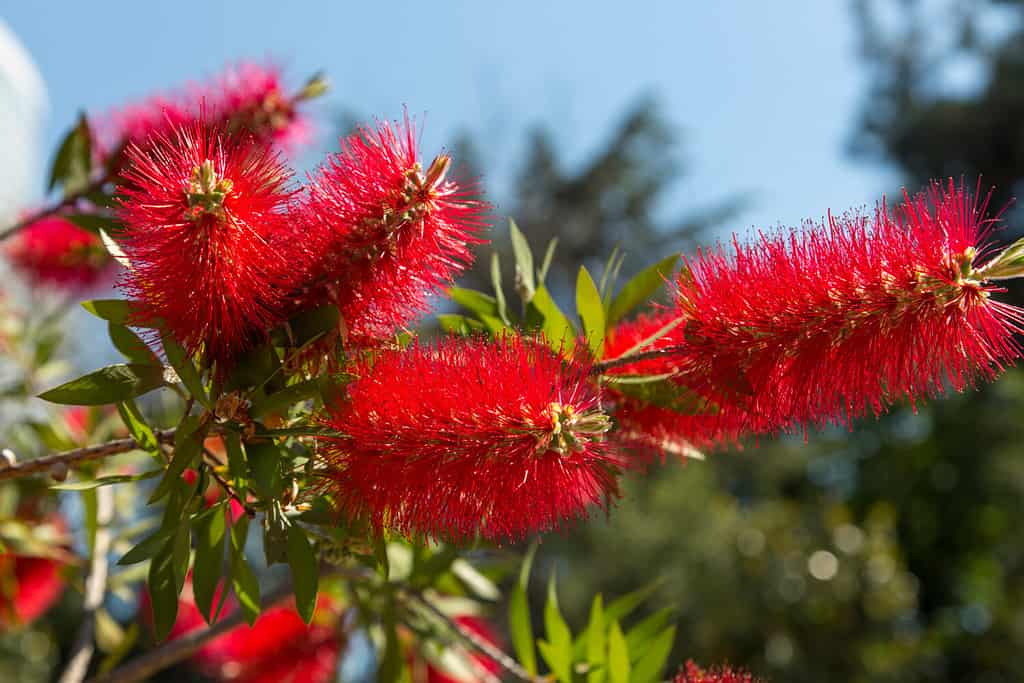
Bottlebrush is a great shrub to grow in Florida.
©lucky eyes/Shutterstock.com
Growing a bottlebrush shrub in Florida can bring a beautiful, vibrant splash of color to any landscape. This shrub features a bright red flower with long, fuzzy stamens resembling a bottlebrush. It can grow up to 15 feet tall and 10 feet wide, making it a great choice for a privacy hedge.
The bottlebrush shrub is known to be quite hardy and can tolerate a range of temperatures. It thrives in full sun to partial shade and requires regular watering and fertilization. The shrub provides a great source of nectar for birds, bees, and butterflies, making it great for wildlife.
Camellia

If you are looking for a stunning shrub for Florida, consider a Camellia.
©iStock.com/Maria_Castellanos
Growing camellia in Florida offers a unique opportunity to cultivate a beautiful flowering shrub with a delicate and pleasing appearance. This shrub typically reaches a height of up to 8 feet and has glossy dark green leaves and bright pink, white, or red flowers. Camellia is a great choice for gardens in Florida, as it is drought-resistant and can thrive in soil with a pH of 6 or higher.
Birds and other wildlife are often attracted to camellia shrubs, making them a great addition to attract wildlife to your garden. Hummingbirds may be found flitting among the branches of a camellia bush, and other birds such as cardinals, finches, and titmice often visit the shrub for its nectar and seeds. Butterflies, bees, and other pollinators also enjoy the delicate blooms of the camellia.
Chastetree

There are a few different varieties of chaste trees to pick from, including this round-leaf chaste tree.
©pisitpong2017/Shutterstock.com
Growing chastetree (Vitex) in Florida is a rewarding experience. This shrub typically grows to a height of 6-10 feet and has a rounded shape. Its branches are slightly drooping, and the leaves are a bright green color. Its fragrant flowers are bluish-purple and bloom during the summer months.
The chastetree is a great addition to any landscape. It is fairly drought-tolerant and will attract a variety of wildlife, including butterflies, bees, and hummingbirds. In addition, it can be an attractive and effective privacy screen.
Overall, the chastetree is an easy-to-grow shrub in Florida. As long as it is planted in an area with well-draining soil and plenty of sunlight, it should thrive. With a little bit of care, this shrub can provide years of enjoyment.
Elderberry

If you grow a black elderberry shrub, the berries are edible and make excellent tea.
©iStock.com/redstallion
Elderberry is a beautiful shrub that’s well-suited to Florida’s tropical climate. It grows to between 5 and 12 feet tall, with a spread of 6 to 10 feet. Its bright green, lanceolate leaves turn a deep red or purple in the fall. Its white flowers appear in late spring and early summer, and its black fruits are ripe in late summer and early fall.
Wildlife are drawn to the elderberry shrub. Its sweet fruits are a favorite of birds, including bluebirds, cardinals, cedar waxwings, orioles, and robins. Its flowers attract butterflies, and its leaves provide shelter to small animals. In addition, its wood is a favorite of carpenter bees.
Holly

Birds love the berries of holly shrubs.
©Bonnie Taylor Barry/Shutterstock.com
Holly is a popular choice of shrub in Florida gardens. These evergreen shrubs come in a variety of shapes and sizes, from low-growing varieties such as Yaupon holly and Japanese holly to upright varieties like Foster holly and Savannah holly. The shrubs provide beautiful year-round greenery and colorful berries in winter, making them highly desirable for ornamental gardens.
These shrubs generally grow to a height of 6-12 feet and can spread as wide as 8-15 feet. They thrive in full sun to partial shade, making them an easy choice for Florida gardens. The foliage is glossy and deep green, and the berries range in color from yellow to deep red.
Not only are holly shrubs a beautiful addition to any garden, but they also attract a variety of wildlife. Songbirds, including cardinals, waxwings, and mockingbirds, love the berries, and butterflies and bees are drawn to the nectar-filled flowers. Even small mammals, such as raccoons, opossums, and squirrels, are attracted to the fruits.
Indian Hawthorn
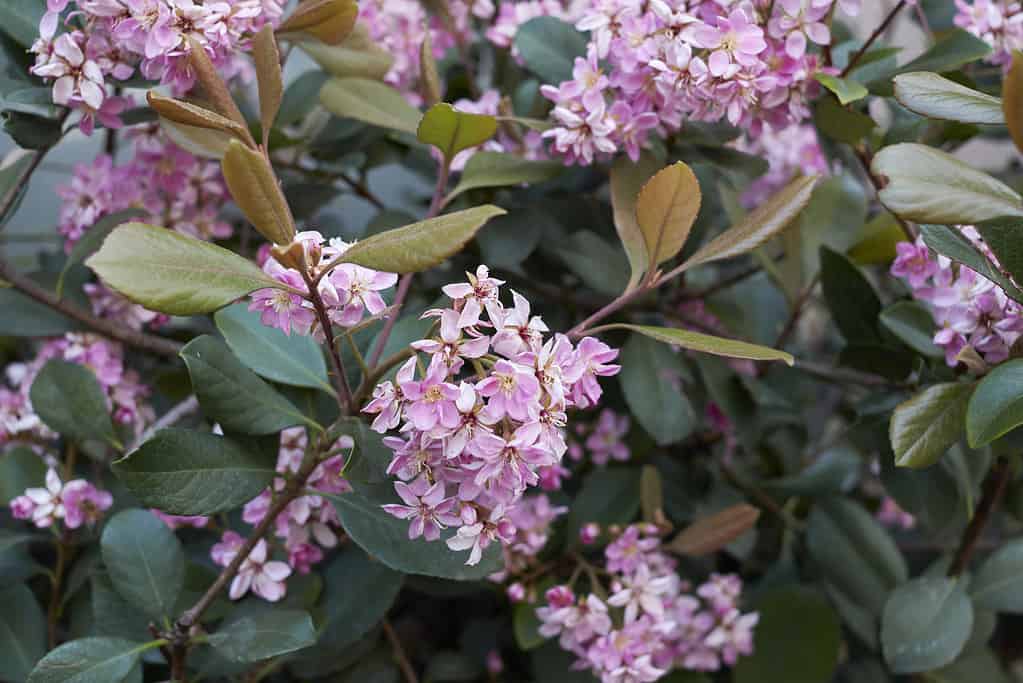
The pink flowers of Rhaphiolepis indica shrub are very attractive to butterflies.
©seven75/ via Getty Images
Indian hawthorn is a popular shrub to add to your Florida garden. It is an evergreen shrub that can grow to a height of 3-5 feet with a spread of 4-6 feet. Its leaves are small, oval-shaped, and light green. It blooms white and pink flowers in the spring and summer. Indian hawthorn is low-maintenance and easy to care for and can tolerate partial shade and full sun.
The dense foliage of this shrub is attractive to birds and butterflies, making it a great addition to wildlife gardens. Smaller birds, such as finches, warblers, and sparrows, love to nest in the branches and eat the fruit in the winter. Butterflies are drawn to the flowers as a source of nectar. Indian hawthorn is also deer-resistant, making it a great choice for areas with high deer populations.
Juniper
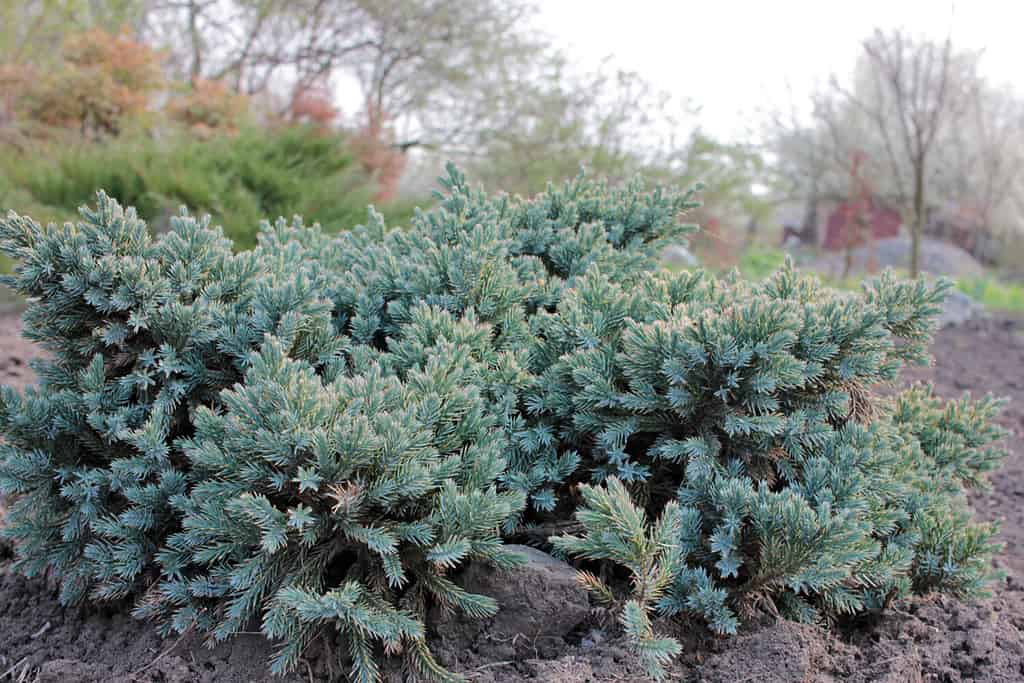
When choosing a shrub for Florida, there are over 40 different junipers to choose from!
©Juver/Shutterstock.com
Growing a juniper shrub in Florida is a great way to add color and texture to your outdoor landscape. These evergreen shrubs typically grow between 3 and 5 feet tall and wide, making them the perfect size for a variety of uses. The foliage of the juniper shrub is usually a bright, light green color, and these shrubs can produce small, blue-gray berries throughout the year.
These attractive shrubs are also beneficial for attracting wildlife, such as birds, squirrels, and butterflies. The birds will enjoy eating the berries, and the squirrels will appreciate the dense foliage as a place to hide. Butterflies are drawn to the shrub’s fragrant flowers, which bloom in the spring and summer.
Juniper shrubs are relatively easy to maintain, needing only a few trimmings throughout the year to keep them looking their best. They are very tolerant of salty soil and salt spray, so if you live near the shore, consider a juniper.
Leatherleaf Mahonia

An Oregon grape and leatherleaf Mahonia are the same shrubs.
©Wirestock/ via Getty Images
Leatherleaf Mahonia is an evergreen shrub that grows well in Florida. It has attractive, holly-like foliage with long, leathery leaves and small yellow flowers that bloom in late winter. This shrub typically grows to a height of 4-5 feet and is an excellent choice for a hedge, screen, or background plant. It’s also easy to maintain and requires minimal pruning.
The attractive flowers of the Leatherleaf Mahonia are a great source of nectar for a variety of butterflies, bees, and other pollinators. Hummingbirds love the flowers, which are full of rich nectar. Birds also love the berry-like fruits.
Oakleaf Hydrangea
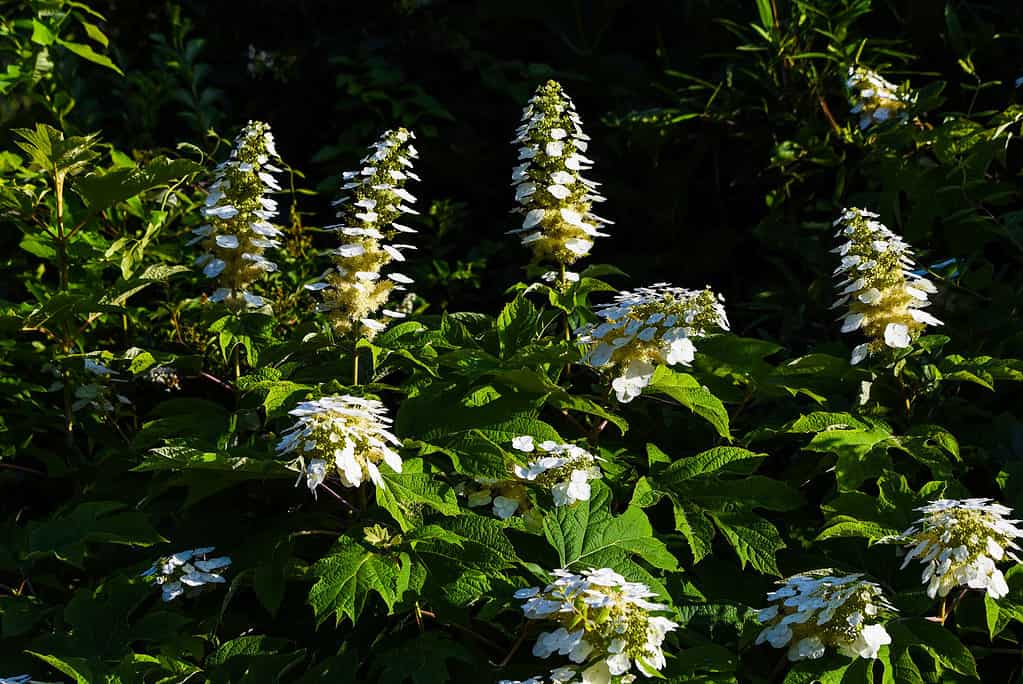
If you need a shrub in Florida that will attract hummingbirds, consider an oakleaf hydrangea.
©iStock.com/undefined undefined
Oakleaf hydrangea is a beautiful shrub that can thrive in Florida’s warm climate. It has large, showy white flowers that bloom in the spring and summer months. Its leaves are dark green and deeply lobed, resembling the shape of an oak leaf. It can reach heights of up to 8 feet and spreads out up to 8 feet as well.
In addition to being a beautiful addition to any garden, oakleaf hydrangea also attracts many species of wildlife. Hummingbirds, butterflies, and bees are all drawn to the flowers for their sweet nectar. Additionally, the leaves of the plant provide food and shelter for birds, squirrels, and other small animals.
Oleander

If you need a fast-growing flowering shrub, then Oleander is for you!
©Happy window/Shutterstock.com
Oleander is a popular flowering shrub in Florida, with its showy blooms, evergreen foliage, and ease of growth. It is drought-tolerant and thrives in full sun. It is a fast-growing shrub that can reach a height of 10 feet. The leaves are narrow and lance-shaped, measuring 2-6 inches long. The flowers come in shades of pink, red, yellow, and white and can reach 2-3 inches in diameter.
To ensure a healthy plant, it’s important to give it well-drained soil and regular watering. Prune it in late winter to early spring, which helps to keep the shrub looking tidy and encourages new growth. Oleander is surprisingly hardy and can tolerate some cold temperatures, but you should protect it from hard frosts. It’s an attractive plant for a hedge or background planting and adds color to any garden.
Wax Myrtle
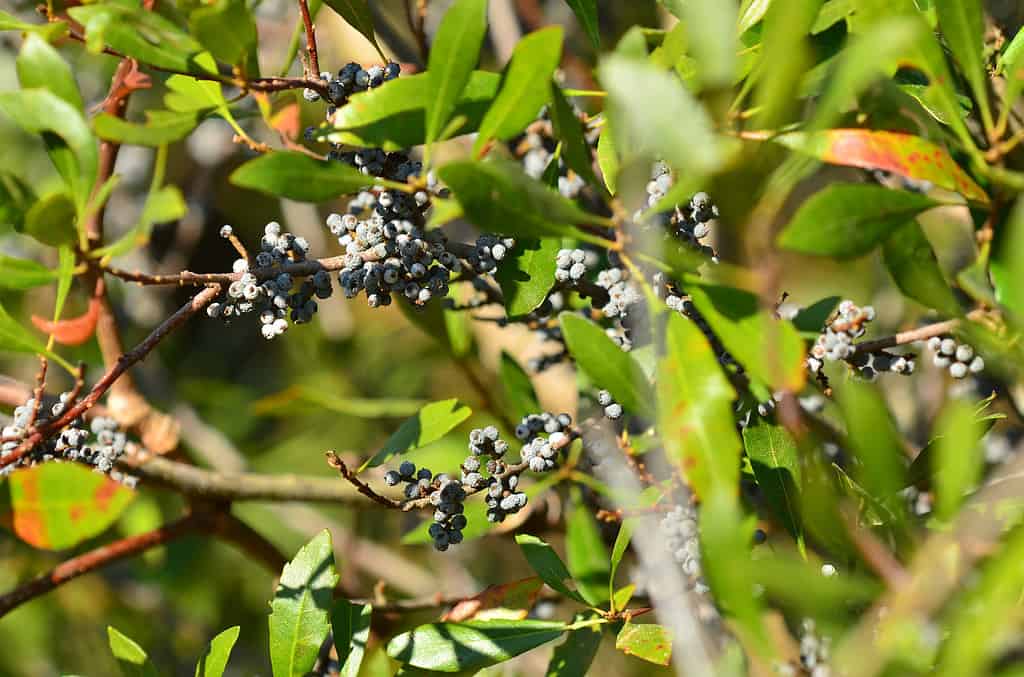
Black, ripe fruits on a wax myrtle bush attract many types of wildlife.
©cturtletrax/ via Getty Images
Wax myrtle, also known as southern bayberry, is a delightful addition to any Florida garden. It grows to a height of up to 15 feet, and its leaves and bark carry a waxy coating that gives it its name. Its dark green foliage turns a deep purple in the colder months. Wax Myrtle produces small, dark-blue berries that people made into candles once upon a time.
Wax Myrtle thrives in full or partial sun, and its salt-tolerant nature makes it an ideal choice for coastal gardens and landscapes. You can also use it as an ornamental or as a hedge. Wax myrtle is fast-growing and can reach its maximum height of 15 feet in less than five years.
Wax myrtle not only adds beauty to your landscape, but it also serves as a host for butterflies and a shelter for birds. Its berries provide a food source for wildlife, and its dense foliage creates a safe spot for birds to nest.
Wild Coffee
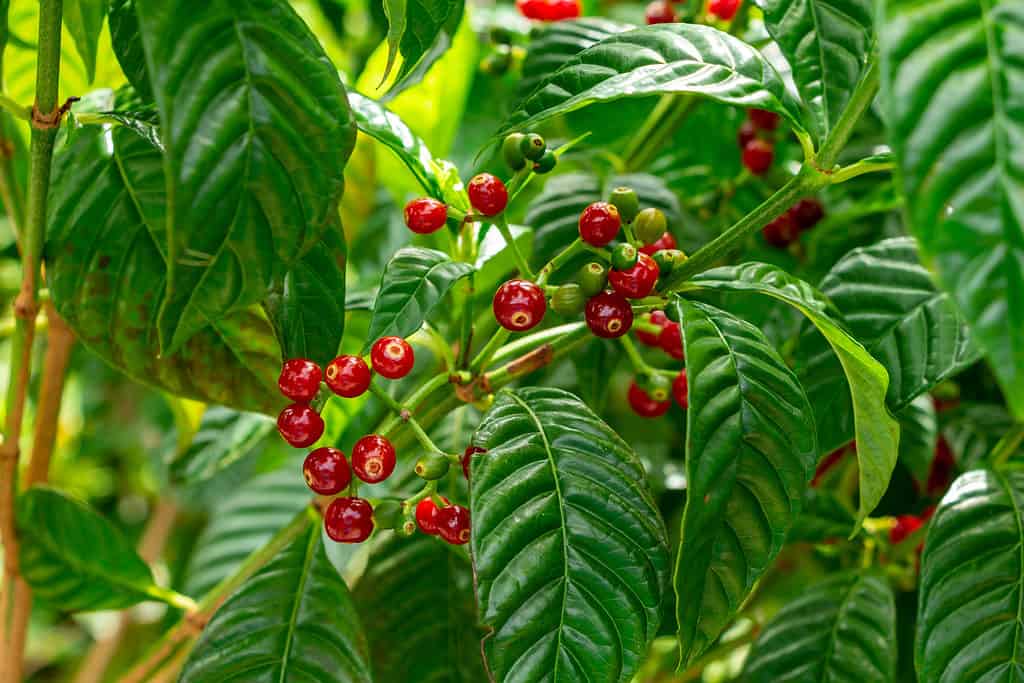
The berries of wild coffee plants do not contain any caffeine.
©Sunshower Shots/Shutterstock.com
Wild coffee (Psychotria Nervosa) is a shrub native to Florida. It grows to a maximum height of 5-6 feet and has small, yellowish-white flowers that bloom between June and July. Its leaves are oval-shaped, glossy, and dark green in color, and its fruit is a small, red drupe that matures in the fall.
Wild coffee is an attractive addition to any Florida garden, and many wildlife species are attracted to it. Hummingbirds and butterflies love to sip the nectar from their flowers, while small mammals, such as birds, squirrels, and raccoons, snack on their fruits. In addition, the shrub provides a valuable food source for pollinators and other beneficial insects.
The photo featured at the top of this post is © seven75/ via Getty Images
Thank you for reading! Have some feedback for us? Contact the AZ Animals editorial team.






